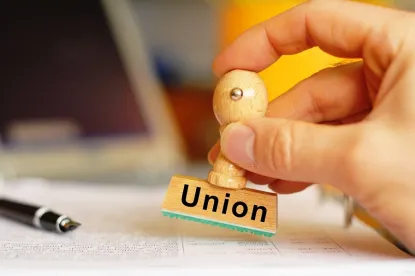Union Organizers Weigh In On What Ails Unions
Union membership in the United States has dropped to about 6.5% of private sector workers, after peaking at about 35% in the 1970s. Yet, Gallup polls show steadily increasing approval of unions, from 48% in 2009 to 65% in 2020. What explains this disparity between the apparent positive impression individuals have of unions and the decrease in private sector union membership? What can be done about it? In Our Times, which dubs itself as an independent political magazine whose mission is to “identify and clarify the struggles against corporate power now multiplying in American society” asked several organizers “about how unions got so deep in a hole, and how to get out.” Here is what the organizers revealed.
What’s wrong:
-
Fear. “Workers [are] terrified of losing their job if they organized or publicly supported the union because it would mean losing healthcare coverage or financial ruin for their family.”
-
Alienation from Workers. “Unions have simply shifted away from empowering workers. Through an overzealous focus on contract enforcement through grievances and … some anti-democratic measures, unions have, in effect, made themselves a third party to the workers.”
-
Time Commitment. “The workers who have the most to gain from a union at their company — those who are over-worked, underpaid, and under-valued — are also the most likely to take on second or third jobs and manage care-taking responsibilities that make it harder to engage in a sustained union campaign.”
-
Polarization. “Over 20 years of generational change, [the old demographics of affinity for unions] has faded a lot, and attitudes to unionization break down much more clearly along conventional right to left [political] lines.”
-
Shop-by-Shop Organizing. “We need to build a new model — like sectoral or multi-employer bargaining — so we can organize entire industries together.”
What can be done about it:
-
Become more visible in people’s lives and discuss the change unions can make in their lives.
-
Ally with community groups, particularly social justice organizations, and worker centers.
-
Strike and use direct visible action more often.
-
Pass pro-union legislation, like the Protecting the Right to Organize (PRO) Act.
-
Adopt and train organizers on best practices.
-
Use organizers who share the experiences of the employees they are attempting to organize.
NLRB May Be Pro the PRO Act
The National Labor Relations Board (NLRB) is expected to have a Democratic majority as early as August 2021, and that may present it with the opportunity to effectuate parts of the PRO Act through case law or rulemaking, subject to court review. (Among other things, the PRO Act would make major worker-protection changes in the National Labor Relations Act.) These may include:
-
Change the test for determining joint employer status to make it easier for two or more employers to be found to be joint employers.
-
Change the definition of “employee” to make it more difficult for an employer to lawfully classify an individual as an independent contractor.
-
Narrow application of the definition of “supervisor” to make it less likely an individual is classified as a supervisor, rather than an employee.
-
Limit the circumstances when an employer may lockout employees or permanently replace strikers.
-
Require bargaining for a first contract to start within 10 days of the union’s request.
-
Require employers to permit employees to use the employer’s electronic communications devices and systems.
-
Require representation elections to be scheduled on the earliest date practicable, but not later than the 20th business day after the direction of an election.
-
Reinstate micro-bargaining units.
-
Conduct representation elections in the manner (in-person, by mail, electronically, and so on) the union requests, without employer input.
NLRB Scrutinizing Mail Ballot Elections
NLRB elections can occur by manual ballot, by mail ballot, or by manual and mail ballot simultaneously. Where voters are scattered at different locations, the NLRB is more likely to order a mail ballot election. The NLRB mails ballots to eligible employees, who must return the ballots to the NLRB within a certain amount of time (generally, 14 days) and almost always through the U.S. Postal Service system. Because of issues with mail ballot elections, the NLRB has stated its willingness to review its mail balloting procedures. [For example, in an unpublished decision, the NLRB expressed an interest in possibly changing the criteria for mail balloting in a future “appropriate proceeding.” Western Wall Systems, LLC, Case 28-RC-247464 (Apr. 16, 2020).] One non-procedural aspect of mail ballot elections also has caught the NLRB’s attention: the occasions where a union contacts voters, requesting they provide the union their ballots (rather than the voter mailing the ballot back to the NLRB). Existing NLRB case law holds that a union’s solicitation of voters’ ballots does not constitute objectionable conduct because “... the solicitation of ballots [does] not create an opportunity for ballot tampering or for a breach of secrecy.” Fessler & Bowman, Inc., 341 NLRB 932 (May 12, 2004). (In Fessler, the NLRB distinguished ballot solicitation from ballot collection, which it has held is objectionable.) The current NLRB is troubled by its view on ballot solicitation, and, in Professional Transportation, Inc., Case 32-RC-259368 (Dec. 2, 2020), the NLRB decided to review that position. In that case, the employer lost a mail ballot election. It filed an objection requesting the NLRB Regional Director to overturn those results. The employer noted in its objection that “[d]uring the course of its election campaign, [the union] improperly solicited and offered to collect mail ballots from several, if not many, ... employees [by] ... call[ing] ... employees asking if they needed help completing their ballots and offer[ing] to collect and mail these ballots for the employees.”
DOL Criminal Law Enforcement Against Union Officials Exceeds Targets
The U.S. Department of Labor (DOL) has reported that it exceeded its goals in fiscal year (FY) 2020 for the prosecution of criminal law violations by union officials (when factoring in that the federal court system was closed for three months due to COVID-19) and for uncovering criminal law violations from audits of union records. Regarding prosecutions: the DOL’s prosecutorial record for FY 2020 included 223 completed criminal investigations (compared to a plan of 211), 61 indictments (plan of 80), and 69 convictions (plan of 80). Regarding audits: the DOL’s Office of Labor-Management Standards (OLMS) conducts audits of labor unions to detect possible embezzlement and ensure and promote compliance with labor laws. OLMS opened a criminal case following 20% of the audits that it conducted, exceeding its FY 2020 plan of 16.5%. It also completed 245 compliance audits, 20 more than its goal of 225. It can be eye-opening for employees who may be considering union representation to learn of the criminal conduct by union officials. Union officials — including some presidents of major international unions such as the UAW — have plead guilty or been convicted of criminal behavior. The DOL posts this information at https://www.dol.gov/agencies/olms/enforcement.






 />i
/>i
